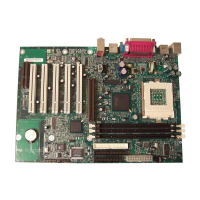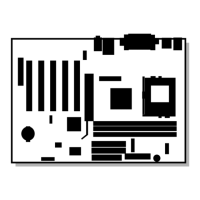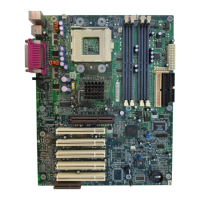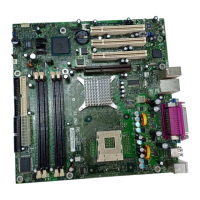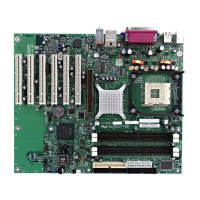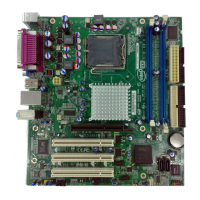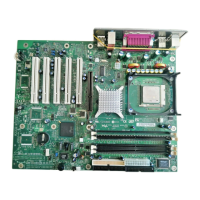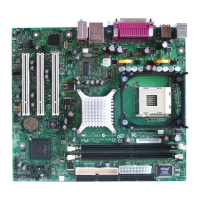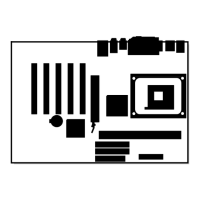Product Description
27
For information about Refer to
The location of the front panel connector Figure 12, page 69
The signal names of the front panel connector Table 48, page 71
Configuring serial port B for infrared applications Section 4.4.3, page 104
The IrDA specification Section 1.3, page 16
1.7.3 Parallel Port
The connector for the multimode bidirectional parallel port is a 25-pin D-Sub connector located on
the back panel. In the BIOS Setup program, the parallel port can be configured for the following:
• Output only (PC AT
†
-compatible mode)
• Bi-directional (PS/2 compatible)
• EPP
• ECP
For information about Refer to
The location of the parallel port connector Figure 9, page 54
The signal names of the parallel port connector Table 22, page 56
1.7.4 Diskette Drive Controller
The I/O controller supports one diskette drive that is compatible with the 82077 diskette drive
controller and supports both PC-AT and PS/2 modes.
For information about Refer to
The location of the diskette drive connector Figure 11, page 63
The signal names of the diskette drive connector Table 42, page 67
The supported diskette drive capacities and sizes Table 71, page 109
1.7.5 Keyboard and Mouse Interface
PS/2 keyboard and mouse connectors are located on the back panel. The +5 V lines to these
connectors are protected with a PolySwitch
†
circuit that, like a self-healing fuse, reestablishes the
connection after an overcurrent condition is removed.
✏
NOTE
The keyboard is supported in the bottom PS/2 connector and the mouse is supported in the top
PS/2 connector. Power to the computer should be turned off before a keyboard or mouse is
connected or disconnected.
The keyboard controller contains the AMI keyboard and mouse controller code, provides the
keyboard and mouse control functions, and supports password protection for power-on/reset. A
power-on/reset password can be specified in the BIOS Setup program.
The keyboard controller also supports the hot-key sequence <Ctrl><Alt><Del> for a software reset
(operating system dependent). This key sequence resets the computer’s software by jumping to the
beginning of the BIOS code and running the power-on self-test (POST).
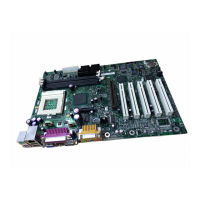
